Why the geyser turns on with cotton: finding the cause and tips for repairing the breakdown
Do you use a gas water heater as a water heater, but all of a sudden it started to make strange cotton when it was turned on? Unfortunately, any equipment is not eternal and breakdowns happen at the most unexpected moment. But a number of simple malfunctions can be fixed on their own. You are planning to try to fix the column with your own hands, without waiting for the arrival of the master, right? But you do not know why the geyser turns on with cotton and where to look for the source of the problem?
We will help you figure it out - this article discusses the most likely causes of cotton in older and newer models of gas water heaters. The material is supplemented by visual photos and video recommendations for troubleshooting and their elimination.
The content of the article:
Why is cotton most likely to occur?
Cotton when turned on most often occurs in columns of an old design, where there is a constantly burning wick. In new generation columns, where gas is automatically ignited, a malfunction occurs, but not so often.
So, cotton is heard due to the late ignition of gas in the burner, which manages to accumulate in large quantities. Therefore, when ignition of the gas finally occurs from the flame of the wick or from the spark of the ignition device, a loud pop is heard to the user. But such a situation is extremely dangerous, if left unattended - over time gazo- the air mixture, before it ignites, begins to fill part of the chimney, which is fraught with weak the explosion.
A serviceable column of any configuration should turn on without flames and pops, softly and quickly.
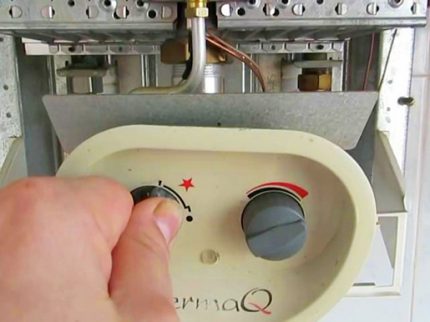
Consider the most common causes of such a nuisance in columns of all types, such as:
- malfunction of the ignition moderator;
- insufficient supply of fresh air to the room;
- insufficient draft or lack thereof (in the chimney).
For columns with a wick, the most common failure is when the flame has an incorrect position in the element of the ignition wick.
For models with automatic ignition, the cause may be:
- incorrect position of the candle;
- malfunction micro switch;
- discharged power supply in the control unit.
Let us consider in more detail the main causes of cotton and the features of determining the source of the problem.
Reason # 1 - weak traction
Through the chimney, the combustion products exit. This happens quickly, but if the steam or carbon dioxide does not have time to cool, they can again fall into the column and cause pollution of the mixture of air and gas. We also recommend that you familiarize yourself with the reasons and ways to eliminate backdraft in the chimney.
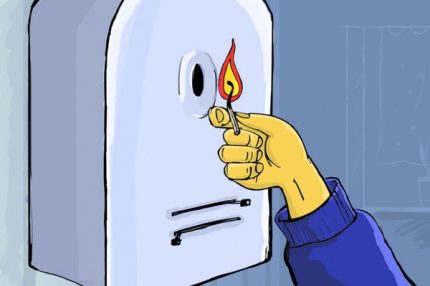
To check the draft in the upper part of certain columns and boilers there is a special hole - a control. It is located on the casing. The test can be carried out simply: bring your hand to this hole, you should feel a pull. You can also use a match. Sufficient thrust is determined by the deviation of the flame tongue from the vertical.
A similar operation can be performed using the hatch, which is equipped with chimneys of gas boilers. If necessary, through the same hatch you can clean and remove debris.
The channel can be checked for debris using a conventional mirror. It is stirred through the hatch into the channel. If a gap is visible, then the channel is clean. And if there is no draft, then in this case we will need the help of specialists who will remove the accumulated soot, which has become the reason for the narrowing of the diameter of the pipe.
Also, poor ventilation, when there is no air in the room, can cause insufficient draft or lack thereof. Safety measures indicate that you can use a gas water heater if the room is ventilated (open window, window on ventilation). Also in this situation, installation will help supply valve to the wall or installation valves on plastic windows.
Reason # 2 - the batteries are dead
If the batteries run out in a column with an automatic ignition system, then cotton will appear when the water is turned on. The lack of electricity for instantaneous sparking provokes a crackling sound that is continuous. Fuel at this moment accumulates in the work area, and when a spark occurs - cotton, and loud.

One of the main factors determining this problem can be considered the presence of a characteristic cod, which indicates that the ignition was not carried out. You can fix the problem. battery replacement.
Reason # 3 - nozzle contamination
Semi-automatic models equipped withpiezo ignition have a flame formation system from the wick.
If the nozzle becomes clogged or starts to work incorrectly, the intensity of the wick burning becomes minimal - insufficient for timely ignition. To fix this problem, the nozzle just needs to be cleaned.
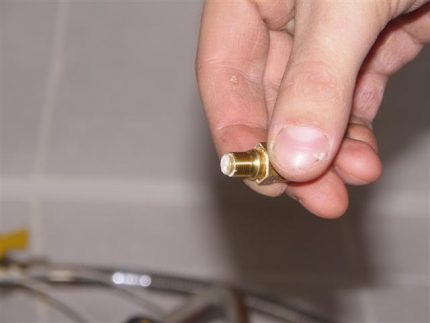
Cleaning the nozzle is a simple process.After removing the casing, the holes are simply cleaned with a thin and soft wire. You also need to check the position of this element. If necessary, move it a little closer to the burner.
Reason # 4 - clogged burner holes
If the openings of the main burner become clogged, in addition to the fact that clapping will occur during operation, significant noise will be heard during operation. In order to eliminate this problem, you need to disassemble part of the column. The burner is cleaned with a soft brush (clogging will be visible). It is not necessary to unscrew the nozzles from the frame, but it is also recommended to clean their holes.
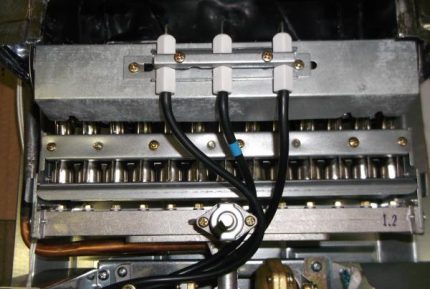
Reason # 5 - poor gas quality
Often the cause of the occurrence of cotton is gas, which in its composition contains a significant amount of additional impurities. Due to the presence of such impurities, it flashes loudly - this noise is like cotton.
To make sure that the reason really lies in the quality of the gas, you just need to ask the neighbors for the same problem. With poor fuel quality, a similar situation will be present in all residents of the house.
Reason # 6 - casing deformation
Thermal effects (heating and cooling) can cause the casing to deform. This problem often occurs. In the event that the deformation occurs inward, the spark plug can pierce the body.
If a deformation is detected, the concave part will need to be slightly bent.
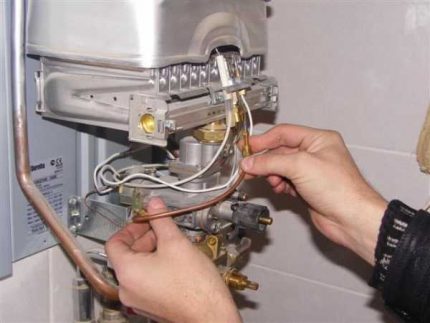
Features of repair of old models
First of all, it is necessary to determine why the gas column pops and makes noise when the water is turned on, and if all of the above disadvantages are already eliminated, and the cotton still persists, then you need to check the functional state of the product.
Let's start by looking at simple examples of equipment with wicks that are used to ignite a combustible mixture.
In such models, loud noise in the form of a clap often occurs if the calculated parameters do not correspond to the flame contours. Timely ignition of the burner does not occur if the dimensions of the fire are small or too large. The cause of this problem is considered to be mechanical clogging of the nozzle openings. Through these openings, a metered gas supply is formed.
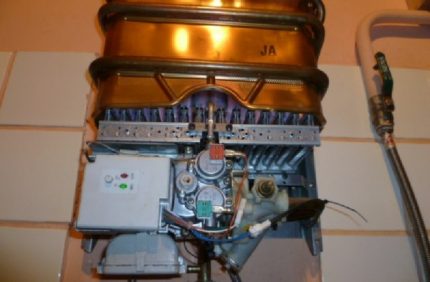
To eliminate the malfunction, you will have to carry out such actions:
- The main casing is dismantled in order to release full access to all internal nodes of the column.
- The block where gas and air is supplied (many manufacturers use such a structure) must be disconnected from the pipe system.
- This is followed by cleaning the nozzle. The most commonly used wire is soft metal. It can be copper or aluminum. The procedure is carried out carefully so that the calibrated hole is not damaged.
- Assembly is carried out in the reverse order, with particular attention being paid to the integrity of the threaded joints and gaskets.
Jets can clog in the main burner. With this clogging, inclusion is also carried out with cotton. When parsing the device, you need to remember that some components and elements, for example, gaskets, valves, thermocouple, differ in low durability therefore it is necessary to handle them extremely delicately.
Troubleshoot new hardware
New equipment can also cause various problems.Most often, they are manifested in the operation of the duct sensor, in the operation of a candle or in the power supply system. Let's take a closer look at these issues.
Speaker micro switch failure
Often the problem of loud popping during ignition becomes an insufficient discharge of batteries, which provokes the lack of the possibility of instant ignition gas-air mixture.
The power supply is connected to the control unit by means of specialmicroswitchesthat are responsible for the occurrence of a signal to activate ignition at the opening of the hot water tap. If the signal arrives late, this becomes the cause of the problem. Such a malfunction occurs most often due to oxidized contacts. To repair micro switch impossible, it will need to be replaced.
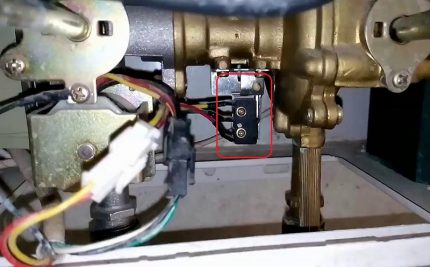
Flow sensor malfunction
Often the problem of the occurrence of cotton is in the duct sensor. It is located in the input circuit. A signal about the presence of liquid in the pipe is sent to the controller of the control unit. The data instantly activates the ignition system. Intensive use of this element creates an increased risk of breakdowns. For example, contact groups may be oxidized.
Such sensors are most often manufactured in inseparable execution, therefore, in the event of a problem cannot be repaired, it is necessary to replace.
Work candle offset
The problem may be the operation of the candle. After applying voltage, it provokes the formation of an electric spark. Modern candles are made so that they are able to last for a long time. Damage to the element is rare, but it does happen.
Most often, there is a displacement of the ignition device relative to the nominal position. It can occur as a result of numerous heating and cooling. Such processes are associated with the resizing of individual structural elements. As a result of adjusting the position of the candle, the spark parameters become normal, extraneous noise completely disappears.
Incorrect moderator operation
A rare breakdown is considered to be the malfunction of the ignition moderator. When disassembling the column, the water regulator must be removed. On its cover which is located the opening of the bypass channel, in this hole is the ball. The adjusting screw determines the position of the ball.
If you hear the sound of a moving ball when you shake the lid, then you should not continue to manipulate this part. If there is no knock, then you can stir up the ball using copper or aluminum thin wire through the hole of the passage channel, which is located in the regulator's cover.
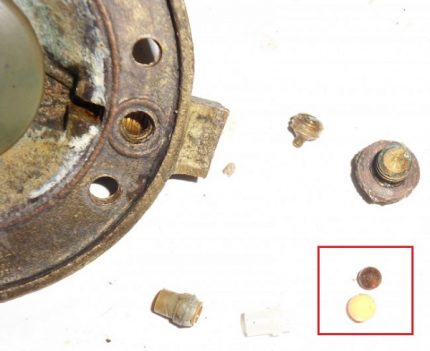
In extreme cases, you have to resort to the procedure for parsing the element. It must be said right away that the outer screw does not affect the position of the ball. The internal screw must be turned out very carefully. First you should remember its initial position, as well as clearly determine the number of revolutions by which this screw is screwed. This will allow the subsequent assembly to maintain the necessary location of the element (ball).
After carrying out repair work, it is imperative that all connections be checked to completely eliminate leakage of both water and gas. All connections must be treated with a sealant, ensuring tightness. Then you can put the casing in place and use the column in the usual mode.
Should the equipment still make noise?
If, after the manipulations have been done, the geyser, when the water is turned on, still ignites with cotton, then it is better to stop further independent research. In such situations you will have to seek help qualified specialists.
They will make a competent diagnosis of the equipment, they will be able to clearly establish what is the cause of the clap, and on the basis of the data received they will be able to provide you with solutions to the problem.
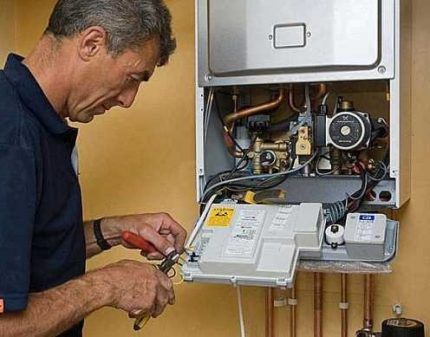
Conclusions and useful video on the topic
Search for the reasons why the gas water heater turns on with cotton and ways to eliminate them in the following video:
The causes of extraneous sounds when you turn on the speaker are many. Most can be diagnosed on their own and try to fix the problem on their own. If you still could not determine the cause of the breakdown, then the only solution in this situation will be to contact gas equipment repair specialists.
Would you like to tell another user about your experience in finding the cause of cotton gas? Or do you have questions that we did not pay attention to in this material? Ask them in the comments section - our experts will try to help you. Share your experience, take part in discussions - the contact form is located below.

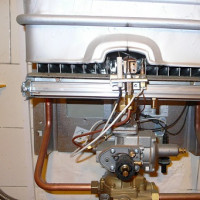 Why the geyser buzzes, clicks, whistles and pops: causes of problems and solutions
Why the geyser buzzes, clicks, whistles and pops: causes of problems and solutions 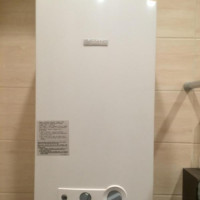 The flame does not ignite in the Bosch geyser: finding the cause of the malfunction and repair recommendations
The flame does not ignite in the Bosch geyser: finding the cause of the malfunction and repair recommendations 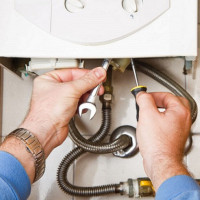 Why the geyser does not heat water: diagnostics of malfunctions and methods of their elimination
Why the geyser does not heat water: diagnostics of malfunctions and methods of their elimination 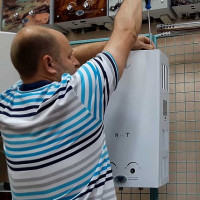 What to do if the geyser flows: an overview of the main causes and recommendations for their elimination
What to do if the geyser flows: an overview of the main causes and recommendations for their elimination 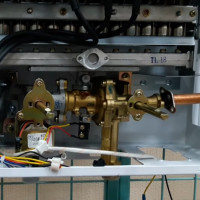 Repair of a water column of a geyser: assembly of a node, major breakdowns and detailed instructions for repair
Repair of a water column of a geyser: assembly of a node, major breakdowns and detailed instructions for repair 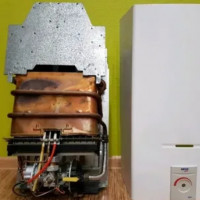 Do-it-yourself vector gas column repair “Vector Lux”: common breakdowns + tips for fixing them
Do-it-yourself vector gas column repair “Vector Lux”: common breakdowns + tips for fixing them  How much does it cost to connect gas to a private house: the price of organizing gas supply
How much does it cost to connect gas to a private house: the price of organizing gas supply  The best washing machines with dryer: model rating and customer tips
The best washing machines with dryer: model rating and customer tips  What is the color temperature of light and the nuances of choosing the temperature of the lamps to suit your needs
What is the color temperature of light and the nuances of choosing the temperature of the lamps to suit your needs  Replacement of a geyser in an apartment: replacement paperwork + basic norms and requirements
Replacement of a geyser in an apartment: replacement paperwork + basic norms and requirements